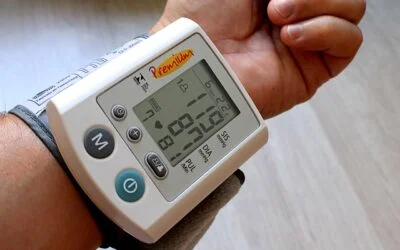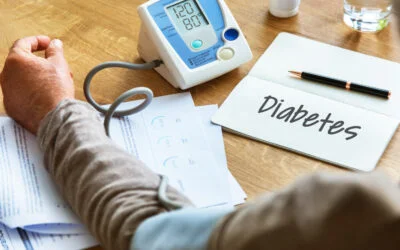Understanding the indicators of good health is essential for maintaining well-being and preventing potential health issues. This guide outlines key signs of health, methods to assess them, and expert insights to help you evaluate overall wellness.
How to Identify if a Person is Healthy or Not?
So, now let us know what are key signs to identify overall wellness of a person.
1. Vital Signs: The Body’s Dashboard.
Vital signs are primary indicators of the body’s essential functions. Regular monitoring can provide early warnings of health problems.
a. Heart Rate.
- Resting Heart Rate: A normal resting heart rate for adults ranges from 60 to 100 beats per minute. Athletes or physically active individuals may have lower rates.
- How to Measure: Place your index and middle fingers on your wrist or neck to locate the pulse. Count the beats for 15 seconds and multiply by four to get beats per minute.
b. Blood Pressure.
- Normal Range: Optimal blood pressure is below 120/80 mm Hg. Elevated levels can increase the risk of heart disease and stroke.
- Monitoring: Use a home blood pressure monitor or have it checked during medical visits. Regular monitoring is crucial, especially if you have risk factors for hypertension.
c. Respiratory Rate.
- Normal Breathing: A healthy adult typically takes 12 to 20 breaths per minute. Breathing should be effortless and unlabored.
- Assessment: Observe the number of breaths taken in one minute while at rest. Consistently high rates may warrant medical evaluation.
2. Physical Fitness: Beyond Appearance
Physical fitness encompasses strength, endurance, flexibility, and body composition.(1)
a. Body Composition.
- Body Mass Index (BMI): BMI is a common measure, but it doesn’t distinguish between muscle and fat mass.
- Waist-to-Hip Ratio (WHR): This metric assesses fat distribution. A higher WHR can indicate increased health risks.
Table: Waist-to-Hip Ratio Risk Levels
| Gender | Low Risk | Moderate Risk | High Risk |
| Male | < 0.90 | 0.90–0.99 | ≥ 1.00 |
| Female | < 0.80 | 0.80–0.84 | ≥ 0.85 |
b. Physical Activity Levels.
- Guidelines: Adults should engage in at least 150 minutes of moderate-intensity aerobic activity or 75 minutes of vigorous-intensity activity per week, along with muscle-strengthening exercises on two or more days per week.
- Self-Assessment: Reflect on your ability to perform daily tasks without undue fatigue and engage in regular exercise routines.
3. Nutritional Status: Fueling the Body Right.
Proper nutrition is foundational to health.

a. Balanced Diet.
- Indicators: Consuming a variety of fruits, vegetables, lean proteins, whole grains, and healthy fats.
- Self-Check: Maintain a food diary to monitor dietary habits and ensure nutrient-rich food intake.
b. Hydration.
- Signs of Adequate Hydration: Light yellow to clear urine, moist mucous membranes, and elastic skin turgor.
- Tip: Aim for at least eight 8-ounce glasses of water daily, adjusting for activity level and climate.
4. Mental and Emotional Well-being: The Mind-Body Connection.
Mental health significantly influences physical health.
a. Emotional Stability.
- Indicators: Ability to cope with stress, maintain relationships, and experience a range of emotions appropriately.
- Self-Assessment: Regularly reflect on your mood, stress levels, and overall outlook on life.
b. Cognitive Function.
- Signs: Clear thinking, good memory, and the ability to concentrate and make decisions.
- Tip: Engage in activities that challenge the brain, such as puzzles, reading, or learning new skills.

5. Sleep Patterns: Restorative Rest.
Quality sleep is vital for overall health.
a. Sleep Duration and Quality.
- Recommendation: Adults should aim for 7–9 hours of uninterrupted sleep per night.
- Indicators of Good Sleep: Falling asleep within 30 minutes, minimal night awakenings, and feeling refreshed upon waking.
- Tip: Establish a consistent sleep schedule and create a restful environment.
6. Regular Health Screenings: Proactive Health Management.
Routine check-ups can detect potential health issues early.
a. Age-Appropriate Screenings.
- Examples: Blood pressure checks, cholesterol levels, blood glucose tests, and cancer screenings (e.g., mammograms, colonoscopies).
- Tip: Consult with healthcare providers to determine appropriate screenings based on age, gender, and family history.
7. Healthy Habits: Lifestyle Choices Matter.
Daily habits significantly impact health.
a. Tobacco and Alcohol Use.
- Guideline: Avoid tobacco products and limit alcohol consumption to moderate levels.
b. Stress Management.
- Techniques: Incorporate relaxation methods such as meditation, deep breathing exercises, and regular physical activity.
| 💡 What Experts Say? Dr. Sarah Jarvis, a general practitioner, emphasizes the importance of understanding various health metrics beyond just weight and height. She notes that factors like waist-to-hip ratio and blood pressure provide deeper insights into one’s health status. Regular monitoring and lifestyle adjustments based on these metrics can lead to better health outcomes. |
Real-World Example.
Consider Jane, a 45-year-old woman with a BMI of 29, categorizing her as overweight. However, her waist-to-hip ratio is within the low-risk range, she maintains regular physical activity, has balanced nutrition, and normal blood pressure. Despite her BMI, these factors indicate she is in good health.
Frequently Asked Questions.
Final Thought.
Assessing an individual’s health involves a holistic approach that considers physical, mental, and emotional well-being. By monitoring vital signs, maintaining a balanced diet, engaging in regular physical activity, ensuring adequate sleep, and managing stress, one can achieve and sustain good health. Regular health screenings and being attentive to the body’s signals are essential steps in proactive health management. Embracing these practices fosters a healthier, more fulfilling life.
+1 Source
Freaktofit has strict sourcing guidelines and relies on peer-reviewed studies, educational research institutes, and medical organizations. We avoid using tertiary references. You can learn more about how we ensure our content is accurate and up-to-date by reading our editorial policy.
- Fitness Measures and Health Outcomes in Youth; https://www.ncbi.nlm.nih.gov/books/NBK241304/

 Workout
Workout
 Meditation
Meditation





 Podcast
Podcast E-book
E-book














